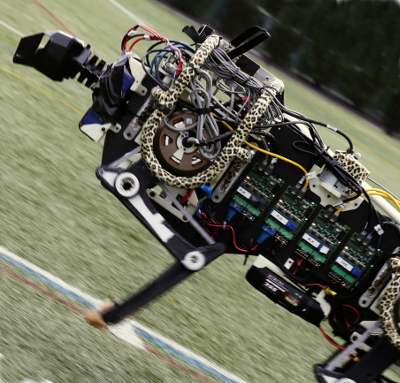Animal speed limits studied
 Researchers have investigated how nature dictates the top speed of animals.
Researchers have investigated how nature dictates the top speed of animals.
In a study merging physics, biology, and palaeontology, researchers believe they have cracked the code on how nature dictates how fast animals can go.
The findings could redefine the understanding of extinct creatures but also to shape the future movement of robots.
Published in Nature Communications, a new physical model looks at how muscle dynamics - considered the universal engine for animals - define the maximum speeds for terrestrial locomotion.
Dr David Labonte of Imperial College London highlights a departure from traditional beliefs: instead of one, there are two ceilings to running speeds governed by muscle contraction speed and distance.
The determining factor of these limits varies with the animal's size, offering a novel perspective on speed limitations.
Dr Labonte has reflected on its broader implications saying; “The study raises lots of interesting questions about the muscle physiology of both extinct animals and those that are alive today, including human athletes”.
The research illuminates why medium-sized animals, particularly those around the weight of cheetahs (approximately 54 kg), hit the 'sweet spot' of speed, reaching velocities over 100 km/h.
This intersection of kinetic energy and work capacity limits explains the unmatched speed of these predators.
Expanding the model's application, the study also sheds light on how these principles could influence our understanding of dinosaurs and the development of future robots.
Harvard University’s Dr Peter Bishop believes the model could revolutionise the understanding of locomotion in extinct species, a topic of long-standing debate.
The study suggests that giants like the Patagotitan, weighing over 40 tonnes, must have had unique muscular structures to move - an area ripe for future investigation.
Dr Taylor Dick from the University of Queensland suggests this model could help explain why large reptiles today are generally smaller and slower than their mammalian counterparts, potentially due to differences in muscle mass distribution affecting their mobility.
The research was supported by funds from the Australian Research Council, the Human Frontiers Science Project, the European Research Council, and the Australian Department of Education.







 Print
Print